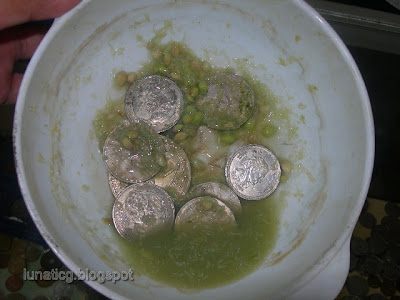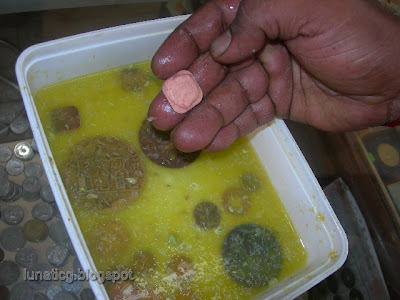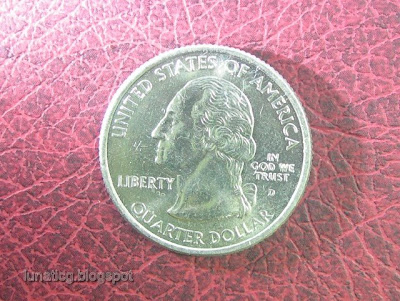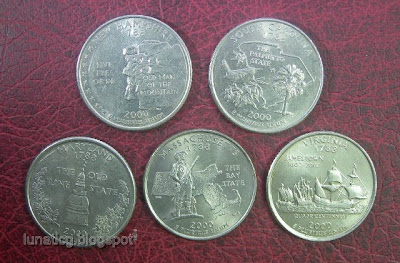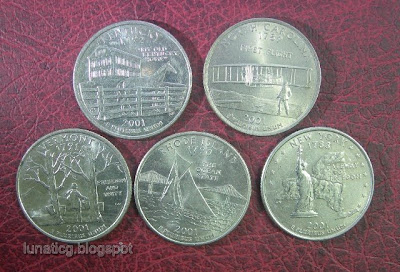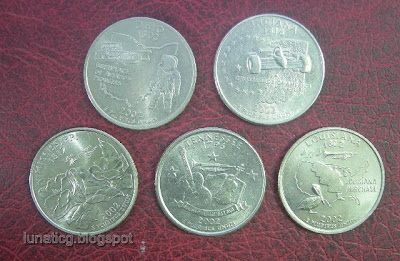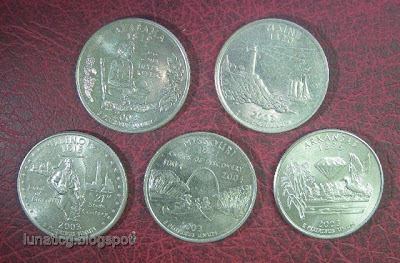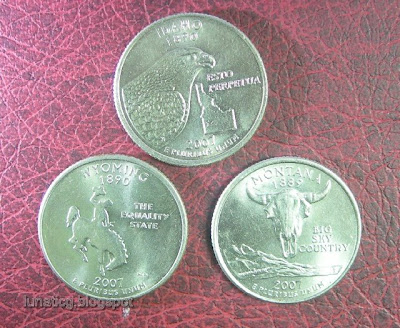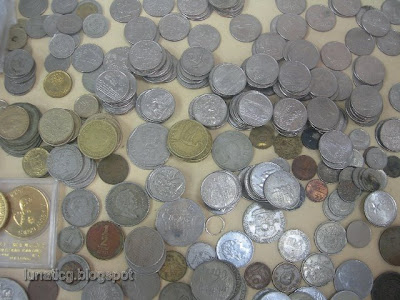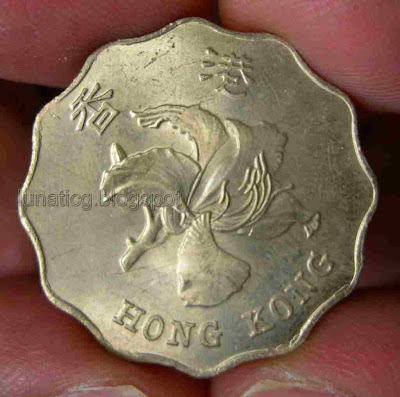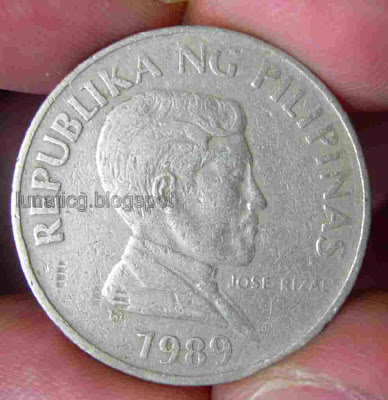Today, I want to share with you an old book written in 1891, BRITISH BORNEO:SKETCHES OF BRUNAI, SARAWAK, LABUAN, AND NORTH BORNEO, by W. H. TREACHER, First Governor of British North Borneo (1881–1887). It tell the history of British Borneo during his administration as a governor and his personal view about British Borneo (Brunei, Sarawak, Labuan and North Borneo). Relating to coins and currency, he wrote how Brunei has been using a Brass Gun and cannon since 1521. He also share a story about Sultan of Brunei who want to use his own copper coin from Birmingham, the coins don't get a good response by traders and can easily be imitated. That had stop Sultan of Brunei from minting more coins. At that time, the coins are just consider as token. The silver currency during that time are the Mexican, Spanish Dollar and the Japanese Yen, supplemented by the small silver coinage of the Straits Settlements. At that time, British North Borneo Company don't produce Silver coins because they don't get enough profit. The British North Borneo Company issues its own copper coinage, one cent and half-cent pieces, manufactured in Birmingham and of the same intrinsic value as those of Hongkong and the Straits Settlements. The book is a Reprinted from the Journal of the Straits Settlements Branch of the Royal Asiatic Society.
Title: BRITISH BORNEO:SKETCHES OF BRUNAI, SARAWAK, LABUAN, AND NORTH BORNEO
Writer: W. H. TREACHER, C.M.G., M.A. OXON.
Pages: 186
pdf size: 6024kb.
TABLE OF CONTENT
CHAPTER I. PAGES i-n.
THE Hudson's Bay Company's Charter, 1670. British North Borneo Company's Charter, November 1 88 1 , as a territorial power. The example followed by Germany. Borneo the second largest island in the world. Visited by Friar Odoric, 1322, by Berthema, 1503 ; but not generally known until, in 1518 Portuguese, and in 1521 Spanish, expeditions touched there. Report of Pigafetta, the companion of Magellan, who found there a Chinese trading community. Origin of the name Borneo; sometimes known as Kalamantan. Spanish attack on Brunai, 1573. First Dutch connection, 1600 ; first British connection, 1609. Diamonds. Factory established by East India Company at Banjermassin, 1702, expelled by natives. British capture of Manila, 1762, and acquisition of Balambangan, followed by cession of Northern Borneo and part of Palawan. Spanish claims to Borneo abandoned by Protocol, 1885. Factory established at Balambangan, 1771, expelled by Sulus, 1775 ; re-opened 1803 and abandoned the following year. Temporary factory at Brunai. Pepper trade. Settlement of Singapore, 1819. Attracted trade of Borneo, Celebes, &c. Pirates. Brooke acquired Sarawak 1840, the first permanent British possession. Labuan a British Colony, 1846. The Dutch protest. Their possessions in Borneo. Spanish claims. Concessions of territory acquired by Mr. Dent, 187778. The monopolies of the first Europeans ruined trade : better prospect now opening. United States connection with Borneo. Population. Malays, their Mongolian origin. Traces of a Caucasic race, termed
Indonesians. Buludupih legend. Names of aboriginal tribes. Pagans and Mahomedans.
CHAPTER II. PAGES 11-33.
Description of Brunai, the capital, and its river. Not a typical Malayan river. Spanish Catholic Mission. British Consulate. Inche Mahomed. Moses and a former American Consulate. Pigafetta's estimate of population in 1521, 150,000. Present estimate, 12,000. Decay of Brunai since British connection. Life of a Brunai noble ; of the children ; of the women. Modes of acquiring slaves :' forced trade.' Condition of slaves. Character and customs of Brunai Malays. Their religion, gambling, cock-fighting : amoks, marriage. Sultan and ministers and officers of the state. How paid. Feudal rights Ka-rajahan, Kouripnn, Pusaka. Ownership of land. Modes of taxation. Laws. Hajis. Punishments. Executions. A naval officer's mistake. No army, navy, or police, but the people universally armed. Cannon foundries. Brass guns as currency. Dollars and copper coinage. Taxation. Revenue ; tribute from Sarawak and North Borneo ;coal resources.
CHAPTER III. PAGES 33-62.
Pigafetta's description of Brunai in 1521. Elephants. Reception by the King. Use of spirituous liquors. Population. Floating Market. Spoons. Ladies appearing in public. Obeisance. Modes of addressing nobles. The use of yellow confined to the Royal Family. Umbrellas closed when passing the Palace. Nobles only can sit in the stern of a boat. Ceremonies at a Royal reception ; bees-wax candles. Mr. Dalrymple's description of Brunai in 1884. Quakers' meeting. Way to a Malay's heart lies through his pocket. Market place and hideous women. Beauties of the Harems. Present population. Cholera. Exports. Former Chinese pepper plantations. Good water supply. Nobles corrupt ; lower classes not. The late Sultan Mnmim. The present Sultan. Kampongs, or parishes and guilds. Methods of fishing: Kelongs; Rambat; peculiar mode of prawncatching; Serambau ; Pukat ; hook and line ; tuba fishing. Sago. Tobacco ;its growth and use. Areca-nut ; its use and effects. Costumes of men and women. Jewellery. Weapons. The kris ; parang; bliong ; parang Hang, The Kayans imitated by the Dyaks in a curious personal adornment. Canoes :dug-outs; pakerangan ; prahus ; tongkangs ; steering gear; similarity to ancient Vikings' boat ; boat races. Paddling. The Brunais teetotallers and temperate. Business and political negotiations transacted through agents. Time no object. The place of signatures taken by seals or chofs. The great seal of state. Brunais styled by the aborigines, Orang Abai. By religion Mahomedans, but Pagan superstitions cling to them; instances. Traces of Javanese and Hindu influences. A native chronicle of Brunai ; Mahomedanism established about 1478 ; connection of Chinese with Borneo; explanation of the name Kina-balu applied to the highest mountain in the island. Pepper planting by Chinese in former years. Mention of Brunai in Chinese history. Tradition of an expedition by Kublai Khan. The Chinese driven away by misgovernment. Their descendants in the Bundu district. Other traces of Chinese intercourse with Borneo. Their value as immigrants. European expeditions against Brunai. How Rajah Brooke acquired Sarawak amidst the roar of cannon. Brooke's heroic disinterestedness. His appointment as British confidential agent in Borneo. The episode of the murder of Rajah Muda Hassim and his followers. Brunai attacked by Admiral Sir Thomas Cochrane. Captain Rodney Mundy follows the Sultan into the jungle. The batteries razed and peace proclaimed.
CHAPTER IV. PAGES 63-77.
Sarawak under the Brooke dynasty. By incorporation of other rivers extends over 40,000 square miles, coast line 380 miles, population 280,000. Limbang annexed by Sarawak. Further extension impossible. The Trusan river ;' trowser wearers'; acquired by Sarawak. The Limbang, the rice pot of Brunai. The Cross flown in the Muhamadan capital by pagan savages. A launch decorated with skulls. Dyak militia, the Sarawak ' Rangers,' and native police force. Peace of Sarawak kept by the people. Cheap government. Absolute Monarchy. Nominated Councils. The 'Civil Service,' 'Residents.' Law, custom, equity and common sense. Slavery abolished. Sources of revenue ' Opium Farm ' monopoly, poll tax, customs, excise, fines and fees. Revenue and expenditure. Early financial straits. Sarawak offered to England, France and Holland. The Borneo Company (Ltd.). Public debt. Advantages of Chinese immigration ' Without the Chinese we can do nothing.' Java an exception. Chinese are good traders, agriculturists, miners, artizans, &c. : sober and law-abiding. Chinese secret societies and faction fights ; death penalty for membership. Insurrection of Chinese, 1857. Chinese pepper and gambier planters. Exports sago and jungle produce. Minerals antimony, cinnabar, coal. Trade agriculture. Description of the capital Kuching. Sir Henry Keppel and Sir James Brooke. Piracy. ' Head money.' Charges against Sir J. Brooke. Recognition of Sarawak by United States and England. British protectorate. Death of Sir J. Brooke. Protestant and Roman Catholic Missions. Bishops MacDougal and Hose. Father Jackson. Mahomedans' conversion not attempted.
CHAPTER V. PAGES 77-84.
Incident of the Limbang rebellion against Sultan of Brunai. Oppression of the nobles. Irregular taxation Chukei basoh batis, bongkar sauh, tulongan, chop bibas, &c. The orang kayas. Repulse of the Tummonggong. Brunai threatened. Intervention of the writer as acting Consul General. Datu Klassi. Meeting broken up on news of attack by Muruts. Sultan's firman eventually accepted. Demonstration by H.M.S. Pegasus. l Cooking heads ' in Brunai river. Death of Sultan Mumim. Conditions of firman not observed by successor. Sir Frederick Weld visits and reports on North Borneo and Brunai. Legitimate extension of Sarawak to be encouraged.
CHAPTER VI. PAGES 84-92.
The Colony of Labuan, ceded to England in return for assistance against pirates. For similar reasons monopoly of pepper trade granted to the East India Company in 1774. First British connection with Labuan in 1775, on expulsion from Balambangan. Belcher and Brooke visit Brunai, 1844, to enquire into alleged detention of an European female. Offer of cession of Labuan. Rajah Muda Hassim. At Sultan's request, British attack Osman, in Marudu Bay, 1845. Brooke recognised as the Queen's agent in Borneo. Captain Mundy, R.N., under Lord Palmerston's instructions, hoists British flag in Labuan, 24th Dec., 1846. Brooke
appointed the first Governor, 1847, being at the same time British representative in Borneo, and independent ruler of Sarawak. His staff of 'Queen's officers' ;concluded present treaty with Brunai ; ceased to be Governor 1851. Sir Hugh Low, Sir J. Pope Hennessy, Sir Henry Bulwer, Sir Charles Lees. Original expectations of the Colony not realized. Description of the island. The Kadayans. Agriculture, timber, trade. Overshadowed by Singapore, Sarawak, and North Borneo. Writer's suggestion for proclaiming British Protectorate over North Borneo,and assigning to it the Government of Labuan, has been adopted. Population of Labuan. Its coal measures and the failure of successive companies to work them ;now being worked by Central Borneo Company (Ltd.). Chinese and natives worked well under Europeans. Revenue and expenditure. Labuan self-supporting since 1860. High-sounding official titles. One officer plays many parts. Labuan celebrated for its fruits, introduced by Sir Hugh Low. Sir Hugh's influence ; instance of, when writer was fired on by Sulus. H.M.S. Frolic on a rock. Captain Buckle, R.N. Dr. Treacher's coco-nut plantation. The Church.
CHAPTER VII. PAGES 92-103.
British North Borneo ; mode of acquisition ; absence of any real native government; oppression of the inland pagans by the coast Muhamadans. Failure of American syndicate's Chinese colonization scheme in 1 865. Colonel Torrey interests Baron Overbeck in the American concessions ; Overbeck interests Sir Alfred Dent, who commissions him to acquire a transfer of the concessions from the Sultans of Brunai and Sulu, 1877-78. The ceded territory known as Sabah. Meaning of the term. Spanish claims on ground of suzerainty over Sulu. Not admitted by the British Government. The writer ordered to protest against Spanish claims to
North Borneo, 1879. Spain renounced claims, by Protocol, 1885. Holland, on ground of the Treaty of 1824, objected to a British settlement in Borneo; also disputed the boundary between Dutch and British Borneo. The writer ' violates Netherland territory and hoists the Company's flag on the south bank of the Siboku, 1883. Annual tribute paid to the Brunai Government. Certain intervening independent rivers still to be acquired. Dent's first settlements at Sandakan, Tampassuk, and Pappar. Messrs. Pryer, Pretyman, Witti, and Everett. Opposition of Datu Bahar at Pappar. Difficult position of the pioneer officers. Respect for Englishmen inspired by Brooke's exploits. Mr. W. H. Read. Mr.Dent forms a ' Provisional Association' pending grant of a Royal Charter, 1881, composed of Sir Rutherford Alcock, A. Dent, R. B. Martin, Admiral Mayne, W. H. Read. Sir Rutherford energetically advocates the scheme from patriotic motives. The British North Borneo Company incorporated by Royal Charter, ist November, 1881; nominal capital two millions, 20 shares. 33,030 shares issued. Powers and conditions of the Charter.
CHAPTER VIII. PAGES 103-117.
Area of British North Borneo exceeds that of Ceylon ; points of similarity ;styled < The New Ceylon.' Joseph Hatton's book. Tobacco planters attracted from Sumatra. Coast-line, harbours, stations. Sandakan town and harbour; founded by Mr. Pryer. Destroyed by fire. Formerly used as a blockade station by Germans trading with Sulu. Capture of the blockade runner Sultana by the Spaniards. Rich virgin soil and fever. Owing to propinquity of Hongkong and Singapore, North Borneo cannot become an emporium for eastern trade. Its mineralogical resources not yet ascertained. Gold, coal, and other minerals known to exist. Gold on the Segama river. Rich in timber. ' Billian ' or ironwood ; camphor. Timber Companies. On board one of Her Majesty's ships billian proved three times as durable as lignum vitse. Mangrove forests. Monotony of tropical scenery. Trade a list of exports. Edible birds'-nests. Description of the great Gomanton birds'-nests caves. Mr Bampfylde. Bats' Guano. Mode of collecting nests. Lady and Miss Brassey visit the Madai caves, 1887. Beche-de-mer, shark fins, cuttle fish. Position of Sandakan on the route between Australia and China importance as a possible naval station. Shipping. Postal arrangements. Coinage. Currency. Banking. Probable cable station.
Importance of the territory as a field for the cultivation of the fine tobacco used for 'wrappers.' Profits of Sumatra Tobacco Companies. Climate and Soil. Rainfall. Seasons. Dr. Walker. The sacred mountain, Kina-balu. Description of tobacco cultivation. Chinese the most suitable labour for tobacco; difficulty in procuring sufficient coolies. Count Geloes d'Elsloo. Coolies protected by Government. Terms on which land can be acquired. Tobacco export duty. Tobacco grown and universally consumed by the natives. Fibre plants. Government experimental garden. Sappan-wood. Cotton flock.
CHAPTER X. PAGES 127-147.
Erroneous ideas as to the objects of the Company. Difficult to steal Highlanders 'trowsers. Natives ' take no thought for the morrow.' The Company does not engage in trade or agriculture. The Company's capital is a loan to the country, to be repaid with interest as the country developes under its administration. Large area of land to be disposed of without encroaching on native rights. Land sales regulations. Registration of titles. Minerals reserved. Trnnfer from natives to foreigners effected through the Government. Form of Government the Governor, Residents, &c. Laws and Proclamations. The Indian Penal, Criminal, and Civil procedure codes adopted. Slavery provision in the Charter regarding. Slave legislation by the Company. Summary of Mr. Witti's report on the slave system. Messrs. Everett and Fryer's reports. Commander Edwards, R.N., attacks the kidnapping village of Teribas in H.M.S. Kestrel. Slave keeping no longer pays. Religious customs of the natives preserved by the Charter. Employment of natives as Magistrates, &c. Head-hunting. Audit of 'Heads Account.'Human sacrifices. Native punishments for adultery and theft. Causes of scanty population. Absence of powerful warlike tribes. Head hunting its origin. An incident in Labuan. Mr. A. Cook. Mr. Jesse's report on the Muruts to the East India Company. Good qualities of the aborigines. Advice to young officers. The Muhamadans of the coast, the Brunais, Sulus, Bajows. Capture by Bnjows of a boat from an Austrian frigate. Baron esterreicher. Gambling and cattle lifting. The independent intervening rivers. P'atal affray in the Kawang river : death of de Fontaine, Fraser and others. Mr. Little. Mr. Whitehead. Bombardment of Bajow villages by Captain A. K. Hope, R.N., H.M.S. Zephyr. Captain Alington, R.N., in H.M.S. Satellite. The Illanuns and Balinini. Absence of Negritos. The ' tailed' people. Desecration of European graves. Muhamadans' sepulture. Burial customs of the aborigines.
CHAPTER XL PAGES 147-165.
Importance of introducing Chinese into Borneo. Java not an example. Sir Walter Medhurst Commissioner of Chinese immigration. The Hakka Chinese settlers. Sir Spencer St. John on Chinese immigration. The revenue and expenditure of the territory. Zeal of the Company's officers. Armed Sikh and Dyak police. Impossible to raise a native force. Heavy expenditure necessary in the first instance. Carping critics. Cordial support from Sir Cecil Clement! Smith and the Government of the Straits Settlements. Visit of Lord Brassey his article in the 'Nineteenth Century.' Further expenditure for roads, &c., will be necessary. What the Company has done for Borneo. Geographical exploration. Witti and Hatton. The lake struck off the map. Witti's murder. Hatton's accidental death. Admiral Mayne, C.B. The Sumpitan or Blow-pipe. Errors made in opening most colonies, e.g. the Straits Settlements. The future of the country. The climate not unhealthy as a rule. Ladies. Game. No tigers. Crocodiles. The native dog. Pig and deer. Wild cattle. Elephants and Rhinoceros. Bear. Orang-utan. Long-nosed ape. Pheasants. The Company's motto Pergo et perago.
You can download it for free here; British Borneo-sketches of Sabah, Sarawak, Labuan and North Borneo by W.H Treacher-1891




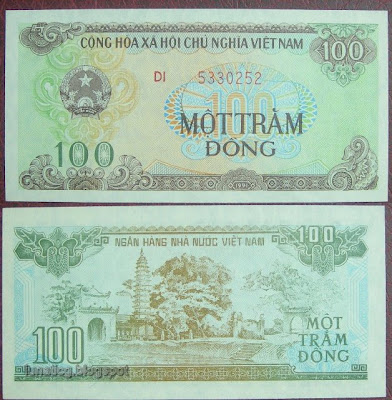
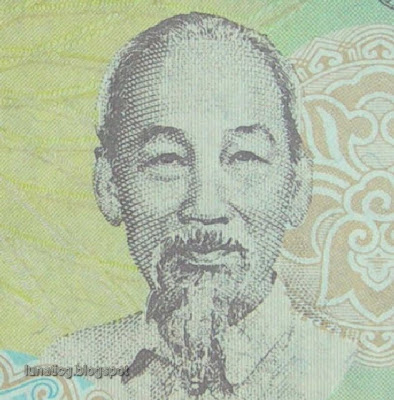


















+issued+by+Emperor+Hong+Wu+made+of+mulberry+paper.jpg)


